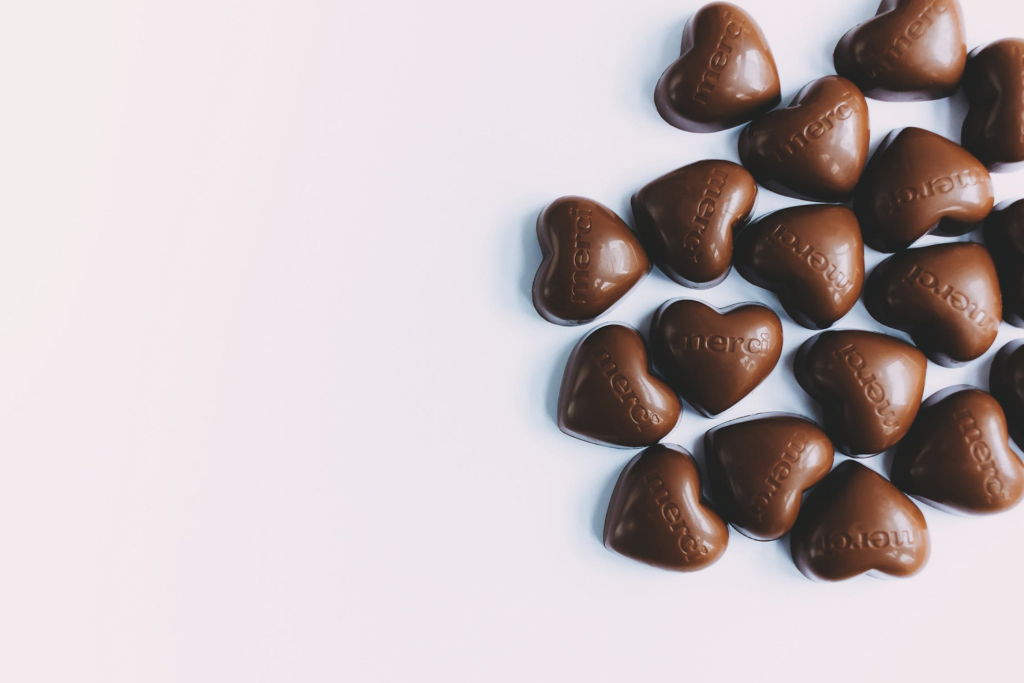Chocolate has been a staple Valentine’s Day gift since the early 1900s. Today, one can hardly imagine the holiday without some type of sugary sweet, but is it possible to maintain good oral health through such sugary holidays?
From classmates and peers to doting grandparents and childhood sweethearts, the tradition of candies on Valentine’s Day means that your child is likely to be swimming in sweets. Parents likely already know that too much sugar can negatively impact oral health, which leaves many to wonder how to control and curtail their child’s Valentine’s Day candy haul.
Just like parents, pediatric dentists don’t want kids to miss out on the delight of holiday treats. Pediatric dentist do, however, want to help you ensure that you know how to help your child take care of their teeth as they indulge and offer some helpful tips on how to keep it fun without so much sugar.
While chocolate is one of the top Valentine’s Day candies, there’s also a lot of sticky and hard candies, such as gummy bears and suckers, that should be kept in moderation. These types of candies are notorious for bathing the mouth in sugar that sticks to the teeth and is extra difficult to remove.
Many parents think that immediately brushing the teeth afterwards is the most logical solution to keeping sweets from harming their child’s teeth, but doing so can actually do more harm than good. The grit of the candy remnants serves as an abrasive that can damage and remove enamel. After eating sticky, hard candies, rinse with water to remove residue. Wait one hour after eating the candy before thoroughly brushing the teeth.
Now that you know what pediatric dentists recommend doing after the sweet stuff, let’s look at a few ways you can reduce the amounts of hard and sticky candies in your child’s Valentine’s Day treats. Try some of these delicious alternatives:
- Use that heart-shaped box that kids love so much as a container for a colorful fruit smorgasbord of raspberries, blueberries, and blackberries.
- Use a heart-shaped cookie cutter to create veggie Valentine’s Day sandwiches on whole grain bread or cheese and fruit cutouts.
- For breakfast, you can use the heart cookie cutter on a slice of whole grain bread; fill the hole with an egg and griddle it for a cute Cupid’s nest. The cookie cutter can also be used on whole grain waffles and pancakes, and honey mixed with a little organic red food coloring makes for a nutritious syrup substitute.
- Substitute the oil and frosting in traditional Valentine’s Day cakes with unsweetened applesauce, and you can opt to make oatmeal and walnut cookies instead of traditional chocolate chip and sugar cookies.
- Pair frozen yogurt with fruit toppings instead of ice cream with candy toppings. Use honey instead of chocolate and caramel topping.
- Use 100% natural fruit juice, such as cranberry juice, to fill heart-shaped ice cube trays. It’s a great alternative to gummy treats and popsicles. You can even pop these in some carbonated water as an alternative to soda.
- Dark chocolate is full of healthy antioxidants. Use it to dip fresh fruits.
- Skip the flavored crackers and chips. Make your own banana chips, or you can make a fruit dip with yogurt and honey.
These are just a handful of the many ways that Valentine’s can be a sweet treat without the excess sugar. You may not control the swaps of candy your child gets from others, and it’s okay to allow them to eat it in moderation, but you can help ensure it doesn’t reach excess by making some simple changes in your own Valentine’s Day treat offerings. Of course, if you have any questions or need more guidance on oral care before and/or after Valentine’s Day, give us a call at West U Smiles!


